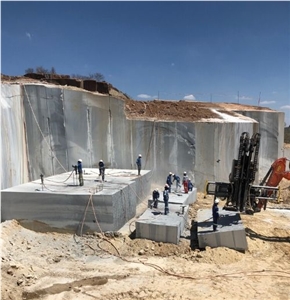A Journey With Granite Quarries in South Africa: Introduction Nature's Artistry
A Journey With Granite Quarries in South Africa: Introduction Nature's Artistry
Blog Article
Revealing the Mysteries of Granite Quarrying: Where Toughness and Style Meet
The world of granite quarrying is a world where the raw stamina of nature merges with human creativity to develop structures that stand the examination of time with an air of elegance. From the depths of quarries to the careful sprucing up in workshops, the process of transforming granite right into architectural marvels is an intricate dance of practice and innovation. As we peer right into the depths of this old craft, we start to uncover the concealed complexities that shape the really significance of our built environment.
The Origins of Granite Quarrying
In the annals of building background, the origins of granite quarrying are shrouded in a tapestry of ancient craftsmanship and geological marvels. Going back to old Egypt and Mesopotamia, the removal of granite from quarries noted the beginning of a trip that would ultimately cause the creation of several of the globe's most iconic frameworks.
Granite quarrying's origins can be traced to the proficient craftsmens who recognized the stone's longevity and aesthetic appeal. Through a mix of primitive devices and sheer resolution, these early quarry employees unearthed granite blocks that would certainly come to be the building blocks of people.
As people progressed, so did the methods of quarrying granite. The Romans, renowned for their engineering prowess, developed innovative techniques for drawing out granite to build monuments, temples, and roadways that stood the examination of time.
The tradition of these old quarrying techniques remains to form modern-day design, with granite staying a symbol of strength and style in building and construction jobs around the globe. (granite quarries in south africa)
Devices of the Quarrying Profession
The advancement of granite quarrying techniques from ancient worlds to modern times highlights the important role played by the tools of the quarrying profession in forming the market's practices. In old times, quarrying devices were rudimentary, usually including chisels, hammers, and wedges made from products like bronze or iron. These tools required substantial manpower and time to remove granite blocks from quarries.

Additionally, the introduction of pneumatically-driven devices and high-powered equipment has dramatically decreased the physical labor needed in quarrying procedures, improving employee safety and security and productivity. As the quarrying industry remains to introduce, the devices of the profession you could try these out continue to be at the center of driving progression and forming the future of granite extraction.
Drawing Out Blocks of Granite
Making use of accuracy machinery and progressed methods, the extraction of granite blocks from quarries has actually become a sophisticated process in the modern-day quarrying market. Controlled blowing up techniques are then utilized to damage apart the granite into manageable areas.

Sprucing Up and Finishing Techniques
To attain a remarkable surface on granite blocks, proficient artisans use a collection of thorough sprucing up and ending up strategies. After the initial extraction and forming procedures, the granite blocks undergo a thorough polishing phase to improve their all-natural appeal and sturdiness. One typical approach made use of in brightening granite is diamond abrasion, where commercial rubies are used to grind and brighten the rock to a smooth surface. This process not only produces a shiny surface area but likewise ensures uniformity in color and appearance throughout description the granite block.
In enhancement to sprucing up, completing techniques are applied to further refine the granite's appearance. By very carefully choosing and using these brightening and ending up strategies, craftsmens can change raw granite obstructs into charming items that showcase both stamina and beauty.

Ecological Influence and Sustainability
With the growing emphasis on ecological consciousness in the industry, granite quarrying methods are significantly inspected for their effect on natural resources and long-term sustainability. Quarrying for granite can have substantial environmental ramifications. The extraction process usually involves making use of hefty equipment, nitroglycerins, and big quantities of water, resulting in habitat destruction, dirt erosion, and water contamination. Additionally, the transportation of granite from quarries to refining facilities produces carbon exhausts, further adding to ecological destruction. granite quarries in south africa.
To alleviate these effects and make sure sustainability in granite quarrying, market stakeholders are taking on numerous actions. Implementing advanced innovations to lower power usage and water use, reclaiming quarried land for environmental remediation, and advertising responsible sourcing methods are some strategies being used. Accreditations such as the Forest Stewardship Council (FSC) and the Management in Energy and Environmental Design (LEED) assistance customers identify ecologically friendly granite products.
Final Thought
To conclude, granite quarrying is a process that calls for specialized tools and strategies to remove blocks of granite and polish them to a high level of finish. While the ecological influence of quarrying can be considerable, efforts are being made to boost sustainability practices in the industry. Generally, granite quarrying is a fragile equilibrium in between utilizing the stamina and sophistication of this natural stone while reducing its effect on the atmosphere.
Report this page